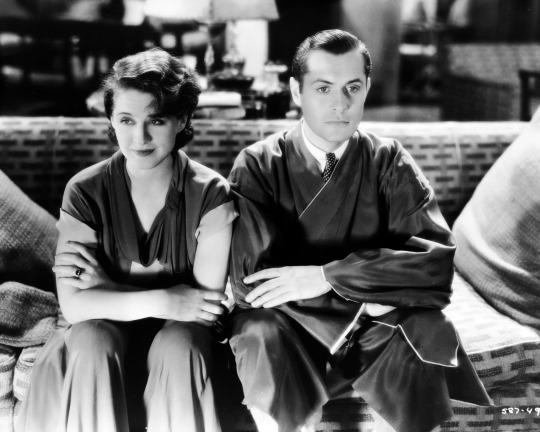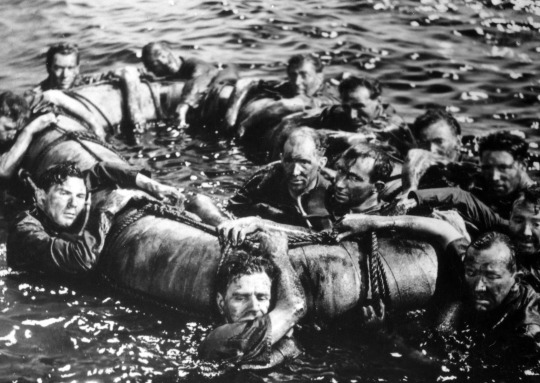#Margaret Constance Williams bio
Link
Real name (Margaret Constance Williams) nickname (Maisie Williams) height ,weight,boyfriend,affairs ,weight,and more physical stats
#Margaret Constance Williams#Margaret Constance Williams bio#Arya Stark bio#Margaret Constance Williams biography#(Arya Stark)#game of thrones
0 notes
Text
Noel Coward: Renaissance Man of Stage and Screen By Susan King

Noel Coward was known simply in England as “The Master.” And for good reason. Coward (1899-1973) was a true Renaissance man. He was an actor, playwright, composer, songwriter, producer and director. (Lin-Manuel Miranda is our contemporary version of Coward.) He even headlined the Desert Inn in Las Vegas in 1955. He knew he was a genius. Coward once described himself as an “enormously talented man, and there’s no use pretending that I’m not.”
He wrote such classic plays as Private Lives, Design for Living, Blithe Spirit, Cavalcade, The Vortex and Present Laughter. And, he took the stiff-upper lip of his characters. His comedies were filled with extravagant characters firing off delicious bon mots. His dialogue was spare and contemporary. Kenneth Tynan once said, “Coward was the Turkish bath in which English comedy slimmed.”
Needless to say, acting styles changed with Coward and he ushered in a new style of theater. Performers were no longer trapped in the 19th-century style of more declamatory acting. As a composer, the flamboyant Coward wrote such beloved songs as “Mad Dogs and Englishmen” and “I’ll See You Again.” Hollywood soon took notice of Coward the playwright. One of Coward’s biggest West End hits was 1931’s Cavalcade, a sweeping dramatic epic spanning 30 years in an upper-class family. The cast featured a staggering 200 actors, 22 sets including revolving stages and hydraulic platforms. Brad Rosenstein of the Museum of Performance & Design in San Francisco told the L.A Times in 2010 about the stage production: “In the earlier sections, it’s very realistic, almost like a movie, but as the story moves further and further into the 20th century, it becomes more and more surreal.”

Fox bought the film rights, shooting the stage production to use as a blueprint for its lavish 1933 film production starring Diana Wyngard and Clive Brook. “Designer William Cameron Menzies translated his stage montages into movie terms and that became the language of movie montages for the next 30 years,” said Rosenstein. CAVALCADE earned three Oscars including best film and director for Frank Lloyd. But truth be told, the film just hasn’t held up as well as other best film Oscar winners from that era. It’s handsome and well-acted but is a bit of a slog that screams prestige.
MGM’s “Boy Wonder” producer Irving Thalberg, who happened to be married to the studio’s top star Norma Shearer, bought the film rights to Private Lives for his wife. Rounding out the film adaptation’s cast was Robert Montgomery, Reginald Denny and Una Merkel. The farce, released in 1931, whirls around Amanda (Shearer) and Elyot (Montgomery), divorcees who reunite on their honeymoon with their new spouses and run off together.
Coward initially wasn’t thrilled that Shearer, who was best known for her heavily dramatic roles, was cast as Amanda. He didn’t think she was up to the comedic task. Shearer was unruffled: “I don’t care what he thinks.” Reviews were strong and so was the audience response. But truth be told, in the #MeToo climate, it’s hard to watch a film in which the leads scream, yell and throw things at each other and state that certain women should be struck regularly like gongs. Eleven years later, Shearer returned to Coward’s world in WE WERE DANCING (‘42) based on two short plays from the Master’s 1936 play Tonight at 8:30 She hadn’t made a film since 1940, so there was hope this comedy would revive her career. It didn’t.

Movie audiences finally got to see Coward the actor on screen in 1935. Not in a film based on one of his plays but an extraordinary morality piece, THE SCOUNDREL penned and directed by Ben Hecht and Charles MacArthur. Coward is remarkable as the title character, a New York publisher surrounded by sycophants and ruthless and callous in his treatment of people especially a lovely young poet (Julie Haydon). Coward’s Anthony Mallare destroys everything he touches including the poet and her lover (Stanley Ridges). When she learns that Mallare is taking a flight, she tells him that not only does she hope the plane crashes, she desires that as he dies, he knows no one will shed a tear for him. And when the plane crashes, he returns to the earthly world for a month to find someone who will mourn for him.
Mordaunt Hall wrote in his New York Times review: “As a suavely mannered portrait of decadence, The Scoundrel is a remarkably interesting motion picture. Mr. Coward is so perfectly attuned to the part we cannot help suspecting that he contributed to the dialogue. He is a master at delivering the barbed epithet. You have to hear him reciting a line like ‘It reeks with morality-stressing the r’s so as to make it exquisitely funny-to know how good he can be.”
Hecht and MacArthur won an Oscar for their story. Coward won his own special Oscar in 1943 for his stirring World War II drama IN WHICH WE SERVE (‘42) for “outstanding production achievement.” IN WHICH WE SERVE is far more than a propaganda piece to keep British morale up and the home fires burning. The film was inspired by Coward’s friend Lord Louis Mountbatten, who in 1941, lost his ship when it was sunk in the Battle of Crete. Coward stars, produced, penned the music and co-directed with a former editor by the name of David Lean. The story is generally told in flashback about the survivors of a Royal Navy ship that had been destroyed by German torpedoes. While recalling moments in their lives, they hang on to a small lifeboat waiting to be rescued.

Besides Coward, the film also stars Celia Johnson, John Mills and Richard Attenborough, who though uncredited in his film debut, is a stand-out as a sailor. A young Daniel Massey, who was the child of Raymond Massey, plays Coward’s son. Daniel was also Coward’s godson, and 26 years after the release of IN WHICH WE SERVE, he earned a supporting actor Oscar nomination as Coward in the Gertrude Lawrence bio-pic STAR! (‘68). IN WHICH WE SERVE was also nominated for the best film and screenplay Oscars.
Coward and Lean next collaborated in 1944 with the moving THIS HAPPY BREED, another sweeping epic. Based on Coward’s hit play of the same name, THIS HAPPY BREED revolves around a middle-class family who move into a rented house in 1919 and it follows their lives until the declaration of World War II in 1939. Lean directed this classic solo and he gets fabulous performances from the cast which includes Celia Johnson, Robert Newton, Stanley Holloway and John Mills. Ronald Neame provided the stunning Technicolor cinematography. It’s funny, moving and poignant and you’ll find yourself shedding a few tears along the way.
The year 1945 was a prolific one for producer Coward and director Lean. The duo went the Technicolor route with gorgeous results for the hit film version of Coward’s popular comedy-fantasy BLITHE SPIRIT. Rex Harrison portrays a writer who finds his world is turned upside-down when an eccentric medium (a perfect Margaret Rutherford) accidentally conjures up his dead first wife (Kay Hammond) who is jealous of his current spouse (Constance Cummings). The film lacks the spark of the stage play, but it’s still fun and the then cutting-edge special effects won the Oscar.

And what can one say about BRIEF ENCOUNTER (‘45)? One of the most romantic films of all time and stars the delicate Johnson and the handsome Trevor Howard as married people who meet at a small railway station café and fall in love. Everything comes together perfectly in this masterpiece that was released in the U.S. in 1946. Based on Coward’s play Still Life, BRIEF ENCOUNTER is beautifully directed by Lean who really came into his own with this film. The performances of Johnson and Howard are pitch perfect and poignant; Robert Krasker supplied the atmospheric black-and-white cinematography and the use of Rachminoff’s Piano Concerto No. 2 just adds to the romance.
Lean won the grand prize for his direction at the Cannes Film Festival in 1946 and earned his first Oscar nomination for Best Director in addition to sharing a screenplay nomination with Anthony Havelock-Allan and Neame. Johnson was nominated for best actress which she lost to Olivia de Havilland for TO EACH HIS OWN (’46), but Johnson did win the New York Film Critics honor.
#Noel Coward#Blithe Spirit#Brief Encounter#Private Lives#Norma Shearer#playwright#David Lean#Susan King
62 notes
·
View notes